It's your girlfriend's birthday? Your beloved is ill? A colleague lent you his car? The best mum in the world cooked you dinner – again?
Then birthday wishes, a thank you or another heartfelt gesture are more or less a must.
Chocolate from Maestrani
Why is chocolate good for morning grouchs? Who paid with cocoa beans? And why do ladybirds bring good luck?
Answers to these and other questions can be found here.

Sweet messages from Munz

The colourful metal tin reading Happy Birthday, Thank you, Hello Sunshine or simply with hearts is a loving, personal touch suitable for any occasion.
The bars of finest Munz Swiss milk chocolate in the tin (100 g) are deliciously sweet and creamy, made in Switzerland from premium ingredients that simply taste like more.
The bars of finest Munz Swiss milk chocolate in the tin (100 g) are deliciously sweet and creamy, made in Switzerland from premium ingredients that simply taste like more.
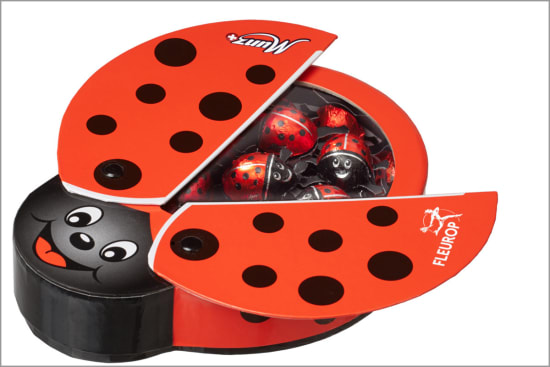
Good luck - with chocolate ladybirds from Munz
At first glance, the chocolate ladybird is a cheerful package in the form of a ladybird with wings that unfold. But when you open it –
well, you really have struck it lucky because 32 little praline-filled ladybirds are smiling up at you, each one individually wrapped.
Together they make up 150 g of the finest Munz chocolate from the Swiss firm of Maestrani.
Together they make up 150 g of the finest Munz chocolate from the Swiss firm of Maestrani.

Admittedly, there are other lucky charms.
But few are as charming as the ladybird, particularly when it's made of the finest chocolate and is therefore delectable.
No wonder flowers with a chocolate ladybird are almost irresistible.
No wonder flowers with a chocolate ladybird are almost irresistible.
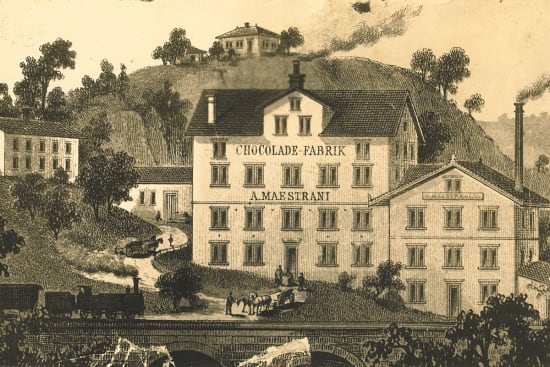
Maestrani - success story of a Ticino chocolate manufacturer
In the early 19th century, chocolate specialties from Lombardy were the height of fashion. Giuseppe Maestrani of Ticino therefore went there to learn the art of chocolate making.
When he became self-employed in 1825 and opened his doors for the first time in Lugano, his chocolate shop was one of only a few in Switzerland.
When he became self-employed in 1825 and opened his doors for the first time in Lugano, his chocolate shop was one of only a few in Switzerland.
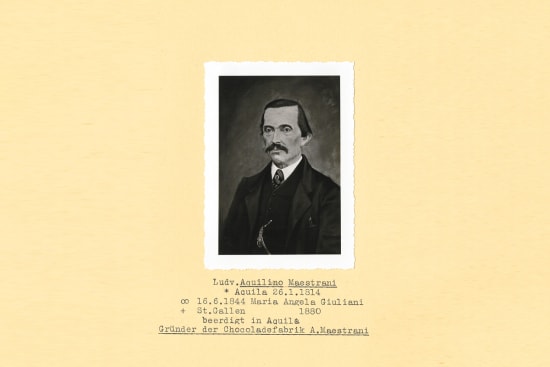
Chocolate-making must have been in the family's blood. In 1852, his son Aquilino also took up this profession and opened his own
firm in Lucerne after many years of learning and travelling.
1852 is therefore considered to be the actual year in which the present company was founded.
At that time, Maestrani was one of the first companies to produce Swiss chocolate, and even in those days its name was synonymous with exquisite pleasure – also demonstrated by the fact that the company became a court supplier to King Umberto I of Italy.
At that time, Maestrani was one of the first companies to produce Swiss chocolate, and even in those days its name was synonymous with exquisite pleasure – also demonstrated by the fact that the company became a court supplier to King Umberto I of Italy.
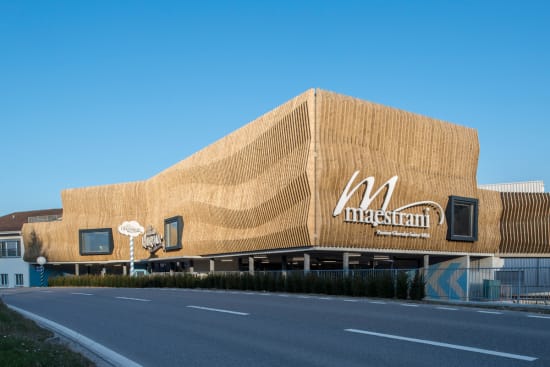
In 1998, the firm, by then a public limited company, purchased the chocolate factory Munz in Flawil and moved its headquarters to that location.

Sustainability is close to Maestrani's heart
It matters immensely to Maestrani that quality of life is maintained for subsequent generations,
which is why, back in 1987, the company was the first Swiss chocolate manufacturer to produce organic and Fairtrade chocolate.
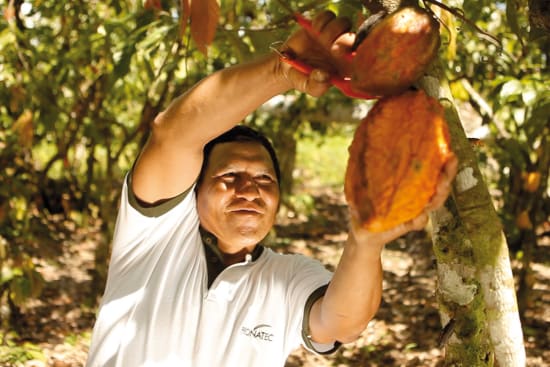
In the meantime, sustainability has become a fixed value in the company philosophy:
- Maestrani has also been manufacturing carbon-neutral chocolate since 2013.
- From 2016, Maestrani has increased the proportion of main suppliers with their own sustainability programme to the current figure of 81%.
- The proportion of certified sustainable cocoa raw materials is 100%.
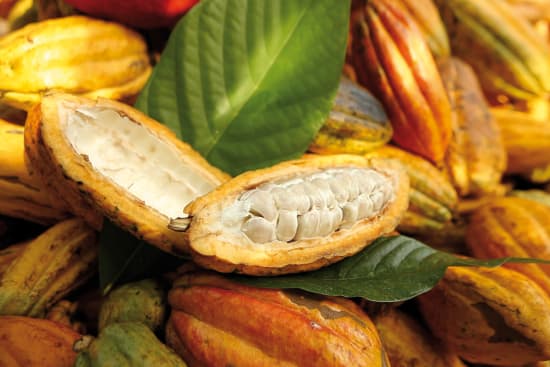
- Maestrani develops and produces its select range of chocolate exclusively in Switzerland and uses natural raw materials almost exclusively.
- Maestrani does not use artificial colourings in its chocolate, it has reduced artificial flavourings to the absolute essentials and has also continuously increased the proportion of organic raw materials.

- With the construction of a new power plant, it has been possible to continuously improve energy efficiency. The power plant supplies both the «Maestrani's Chocolarium» visitor centre and parts of the factory with power.

Why and when ladybirds bring you luck
The «lady» in ladybird actually refers to Our Lady. Because it eats pests in gardens and in agricultural crops,
farmers believed it was a gift from the Virgin Mary and named it after her.
They also made it into a symbol of luck.
They also made it into a symbol of luck.

In Provence, for example, a man on whom a ladybird settles is destined to get married soon.
If, however, women in that area are waiting for «Mr Right», they place a ladybird on their index finger and count the seconds until it flies away.
Every second means a year to wait before the wedding. But you aren't allowed to shake one off or actually kill it, because that is said to bring bad luck.
If, however, women in that area are waiting for «Mr Right», they place a ladybird on their index finger and count the seconds until it flies away.
Every second means a year to wait before the wedding. But you aren't allowed to shake one off or actually kill it, because that is said to bring bad luck.
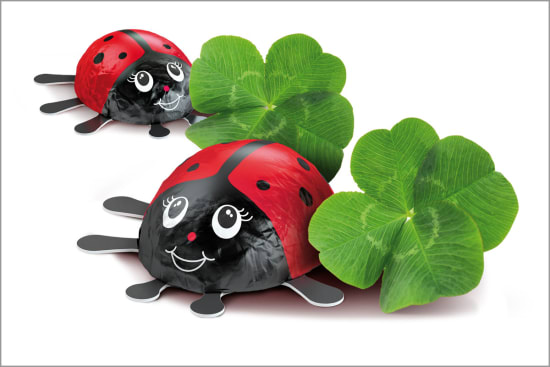
Ladybirds are used for much more today. Whether to wish someone a happy birthday, l
uck in a forthcoming exam or a happy day: you can't go wrong with ladybirds, particularly when they're a treat to eat.

From foamed cocoa to sweet chocolate
When cocoa was discovered as a drink by the Mayas more than 3,000 years ago, its most important property was the foam.
This was created by pouring the brew repeatedly from one vessel into another from a height of approximately 30 cm.
Xocolatl was said to dispel fatigue, which probably has something to do with the theobromine contained in cocoa.
Xocolatl was said to dispel fatigue, which probably has something to do with the theobromine contained in cocoa.

The first European to come across cocoa beans was Christopher Columbus. But it was Hernando Cortés who brought them to Spain.
The first shipload reached Seville in 1585. The Europeans changed the beverage, which had previously been quite bitter, by leaving out cayenne pepper and salt and adding honey and cane sugar instead.
The first shipload reached Seville in 1585. The Europeans changed the beverage, which had previously been quite bitter, by leaving out cayenne pepper and salt and adding honey and cane sugar instead.

A little later, chocolate reached Piedmont in Italy through Catherine Michelle of Spain and Duchess of Savoy,
and went on to conquer other countries that are part of Europe today.
However, it was to be some time before it was produced in Switzerland.
However, it was to be some time before it was produced in Switzerland.

Cocoa beans as currency
For chocolate bars and ladybirds from Munz, wafers and almonds from Gottlieber, cocoa is needed.
This has been known for a long time, because in Central America it was probably already used around 1000 BC. But not just as a nectar reserved for the rich and powerful. Rather, the cocoa bean was also used as a currency.
This has been known for a long time, because in Central America it was probably already used around 1000 BC. But not just as a nectar reserved for the rich and powerful. Rather, the cocoa bean was also used as a currency.

Aztec ruler Moctezuma II, for example, collected taxes in the form of cocoa beans and possessed a billion of them in the end.
The positive features of this primitive money were that it was light, easy to handle and kept well.
An unusual feature, however, is that they were just as easily forged as coins. To do this, counterfeiters soaked ordinary beans in water and then dyed them artificially to an ash grey or pale red colour so that they looked like cocoa beans.
An unusual feature, however, is that they were just as easily forged as coins. To do this, counterfeiters soaked ordinary beans in water and then dyed them artificially to an ash grey or pale red colour so that they looked like cocoa beans.

However, they were not to blame for the inflation that occurred at the end of the 15th century.
That was because more and more people cultivated cocoa plants and, so to speak, grew their own money.
Nevertheless, cocoa beans kept their value as a currency for many years and were very important as loose change. Cocoa beans were still in use as a means of payment in the early 19th century.
Nevertheless, cocoa beans kept their value as a currency for many years and were very important as loose change. Cocoa beans were still in use as a means of payment in the early 19th century.
More loving & high-quality additional gifts
Gottlieber specialties
Here you will find the story of a woman who developed normal wafers into a speciality and find out what makes our cocoa almonds so special.
Chocolate from Maestrani
Why is chocolate good for morning grouchs? Who paid with cocoa beans? And why do ladybirds bring good luck? Answers to these and other questions can be found here.
Honey from Bee-Family
Want to learn more about an irresistible honey? To dive into the world of honey, honey hunters and bee transhumance and know how to store honey? Read here.
Tea from Gottlieber
Which tea is called «gunpowder»? Which type of tea was picked by monkeys? And how is Moroccan tea made? Answers to these questions and more can be found here.
Red wines Amarone and Ripasso by Albino Armani
Here more about our red wines: the Azienda Albino Armani, a wine made from dehydrated grapes, the «accident» called Amarone and a film that will make you dream.
Prosecco Albino Armani
When may a wine be labelled Prosecco? What is meant by Brut or Extra Dry? Who is Albino Armani? And what can dreams look like? Here you will find the answers.
Prosecco Albino Armani Rosé DOC
What does it taste like? What goes well with it? What does Millesimato or SQNPI mean? And how sustainable is Armani? You can find the answers to these and other questions here.
Teddy bears
More about the «birth» and success story of the cute teddies as well as all kinds of information about teddy bear days, teddy bear records or teddy museums can be found here.









